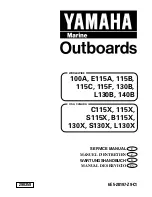
INA4180-4181EVM Circuit
www.ti.com
6
SBOU189 – November 2017
Submit Documentation Feedback
Copyright © 2017, Texas Instruments Incorporated
INA4180-INA4181 Evaluation Module User's Guide
The following is a list of the factors involved in selecting the appropriate device:
•
The INA4180A1-A4 devices are identical with the exception of different gain settings. The INA4181A1-
A4 devices have the same device gain options of the INA4180 but with the addition of the reference
pin that enables bidirectional current measurements.
•
Select INA4180 for unidirectional applications only, and select INA4181 for unidirectional or
bidirectional applications.
•
The differential input voltage is applied across the inputs, or developed based on the load current that
flows through the shunt resistor.
•
A significant limiting factor that requires attention to be given to device selection is the output voltage.
•
The selected device must allow the output voltage to remain within the acceptable range after the input
voltage is amplified by the device gain. The output voltage must remain within the range of 10 mV
above ground to 100 mV below the supply voltage.
•
An output below the minimum allowable output requires the selection of a device with a higher gain.
Likewise, an output above the maximum allowable output requires the selection of a device with a
lower gain.
4.4
Voltages Inputs(IN+1, IN–1, IN+2, IN–2, IN+3, IN-3, IN+4, IN-4)
The IN+1 and IN–1 inputs accept a differential voltage that is amplified by the selected device gain and is
presented at the OUT1 test point. These inputs can also be used to connect the differential voltage
developed across an external shunt in an existing circuit. The acceptable differential input voltage range
and polarity are determined by the supply voltage, reference voltage, and gain of the selected device.
4.5
Reference Voltage pins (REF1, REF2, REF3, REF4)
REF1 test points enables the user to configure the INA4181A1-A4 device boards for either unidirectional
or bidirectional operation. Refer to
Section 4.6
for more information.
4.6
Reference Voltage Setup
The INA4181A1-A4 devices enable the use of an external reference, REF1. This reference determines
how the output responds to certain input conditions. The reference also enables these devices to be used
in unidirectional and bidirectional applications. The REF1 pin can also be connected to supply (VS) to
enable unidirectional measurement in the negative direction.
4.6.1
Rx10, Rx11, Rx12 and Rx13
Rx10 resistors locations are not populated. If a 0-
Ω
resistor is populated, the REF1 pin will be connected
to GND, and the INA4181 can be used for unidirectional measurements. These locations allow for 0805
surface-mount package size.
4.6.2
Unidirectional Mode
Unidirectional
refers to a load current that flows in only one direction.
The INA4180A1-A4 devices are able to measure unidirectional currents only. The INA4181A1-A4 devices
measure unidirectional and bidirectional currents. For unidirectional measurements, connect the REF1 pin
to GND. You can connect the REF1 pin to GND through a 0-
Ω
resistor (Rx10) or ground it directly with the
test point.
4.6.3
Bidirectional Mode
Bidirectional
refers to a load current that flows in both directions.
All manuals and user guides at all-guides.com




































